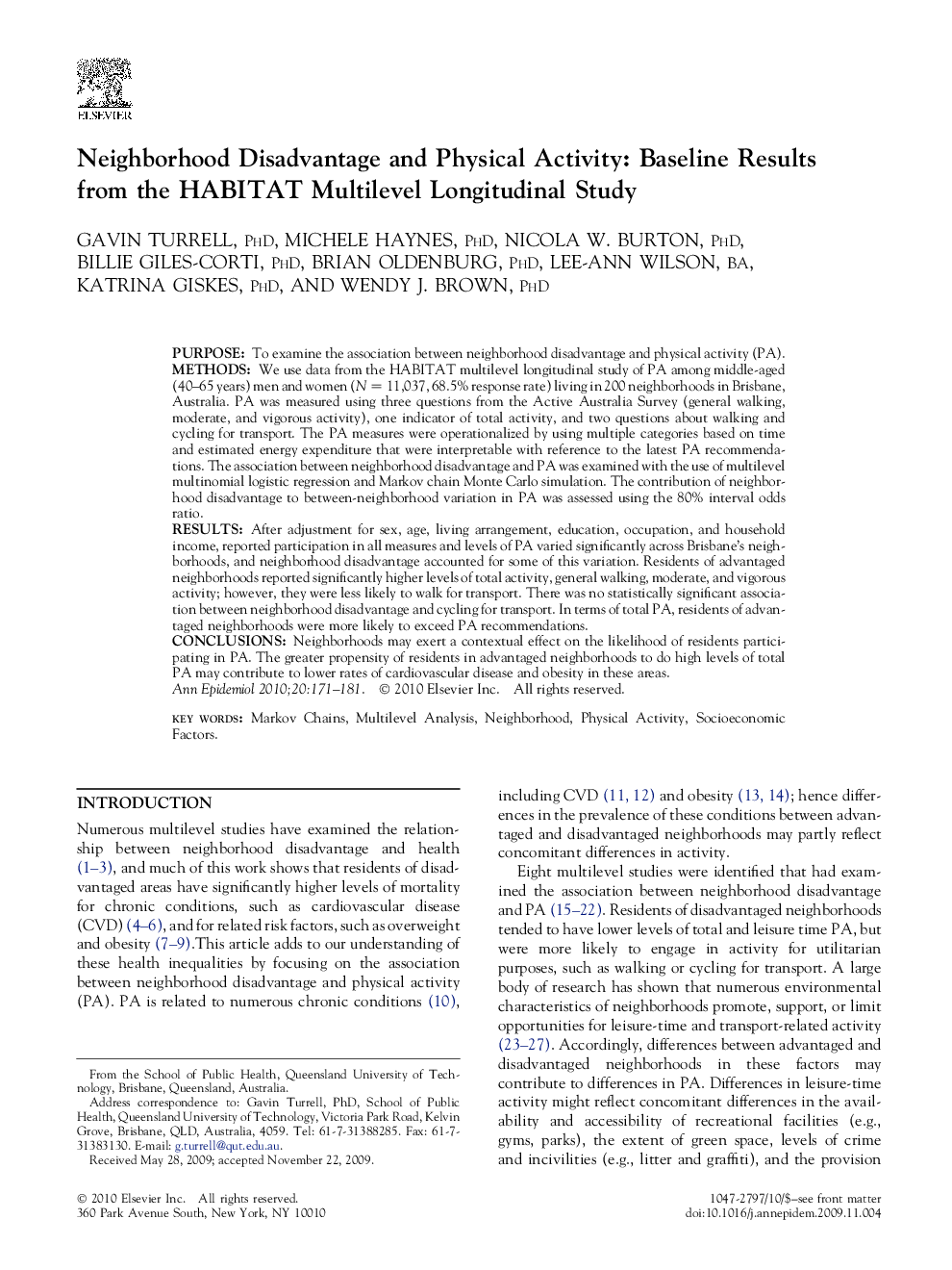| کد مقاله | کد نشریه | سال انتشار | مقاله انگلیسی | نسخه تمام متن |
|---|---|---|---|---|
| 3444796 | 1595305 | 2010 | 11 صفحه PDF | دانلود رایگان |

PurposeTo examine the association between neighborhood disadvantage and physical activity (PA).MethodsWe use data from the HABITAT multilevel longitudinal study of PA among middle-aged (40–65 years) men and women (N = 11,037, 68.5% response rate) living in 200 neighborhoods in Brisbane, Australia. PA was measured using three questions from the Active Australia Survey (general walking, moderate, and vigorous activity), one indicator of total activity, and two questions about walking and cycling for transport. The PA measures were operationalized by using multiple categories based on time and estimated energy expenditure that were interpretable with reference to the latest PA recommendations. The association between neighborhood disadvantage and PA was examined with the use of multilevel multinomial logistic regression and Markov chain Monte Carlo simulation. The contribution of neighborhood disadvantage to between-neighborhood variation in PA was assessed using the 80% interval odds ratio.ResultsAfter adjustment for sex, age, living arrangement, education, occupation, and household income, reported participation in all measures and levels of PA varied significantly across Brisbane's neighborhoods, and neighborhood disadvantage accounted for some of this variation. Residents of advantaged neighborhoods reported significantly higher levels of total activity, general walking, moderate, and vigorous activity; however, they were less likely to walk for transport. There was no statistically significant association between neighborhood disadvantage and cycling for transport. In terms of total PA, residents of advantaged neighborhoods were more likely to exceed PA recommendations.ConclusionsNeighborhoods may exert a contextual effect on the likelihood of residents participating in PA. The greater propensity of residents in advantaged neighborhoods to do high levels of total PA may contribute to lower rates of cardiovascular disease and obesity in these areas.
Journal: Annals of Epidemiology - Volume 20, Issue 3, March 2010, Pages 171–181